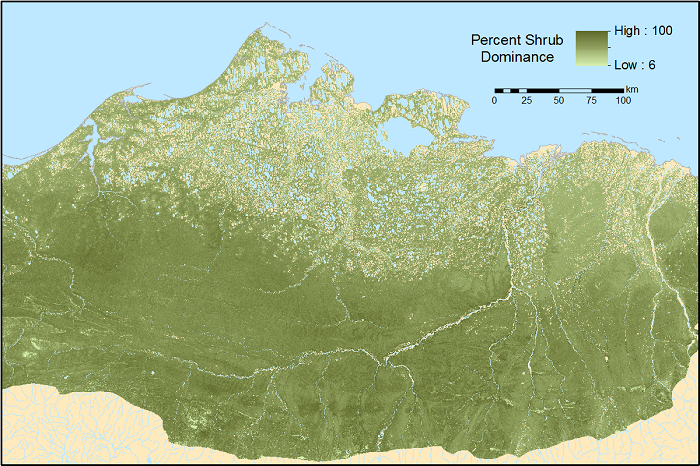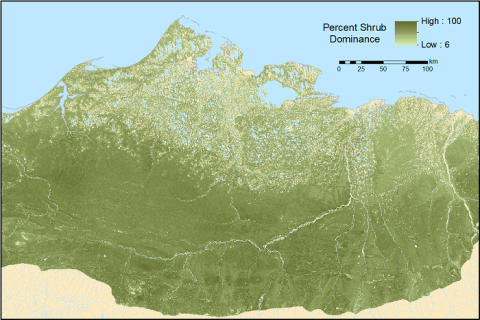The Arctic tundra has been warming at an alarming rate for the past half century. This trend has led to an increase in plant productivity, plant biomass, and shrub cover. This rapid "greening" of what is considered the coldest terrestrial biome on the planet makes collecting vegetation data important to climate change and vegetation studies for the region.
A new dataset archived at the ORNL DAAC provides estimates of aboveground biomass that can help with this research.
ABoVE: Gridded 30-m Aboveground Biomass, Shrub Dominance, North Slope, AK, 2007-2016
This dataset includes 30-m gridded estimates of total plant aboveground biomass (AGB), the shrub AGB, and the shrub dominance (shrub/plant AGB) for non-water portions of the Beaufort Coastal Plain and Brooks Foothills ecoregions of the North Slope of Alaska. The estimates were derived by linking biomass harvests from 28 published field site datasets with NDVI from a regional Landsat mosaic derived from Landsat 5 and 7 satellite imagery. The data cover the period 2007-06-01 to 2016-08-31.
These data could be useful to climate change and vegetation studies in the Alaskan Arctic.
Related Publication:
Logan T. Berner, Patrick Jantz, Ken D. Tape, and Scott J. Goetz. 2018. Tundra plant aboveground biomass and shrub dominance mapped across the North Slope of Alaska. Environmental Research Letters. https://doi.org/10.1088/1748-9326/aaaa9a
Data Citation:
Berner, L.T., P. Jantz, K.D. Tape, and S.J. Goetz. 2018. ABoVE: Gridded 30-m Aboveground Biomass, Shrub Dominance, North Slope, AK, 2007-2016. ORNL DAAC, Oak Ridge, Tennessee, USA. https://doi.org/10.3334/ORNLDAAC/1565
Data center: ORNL DAAC
Sponsor: NASA EOSDIS


